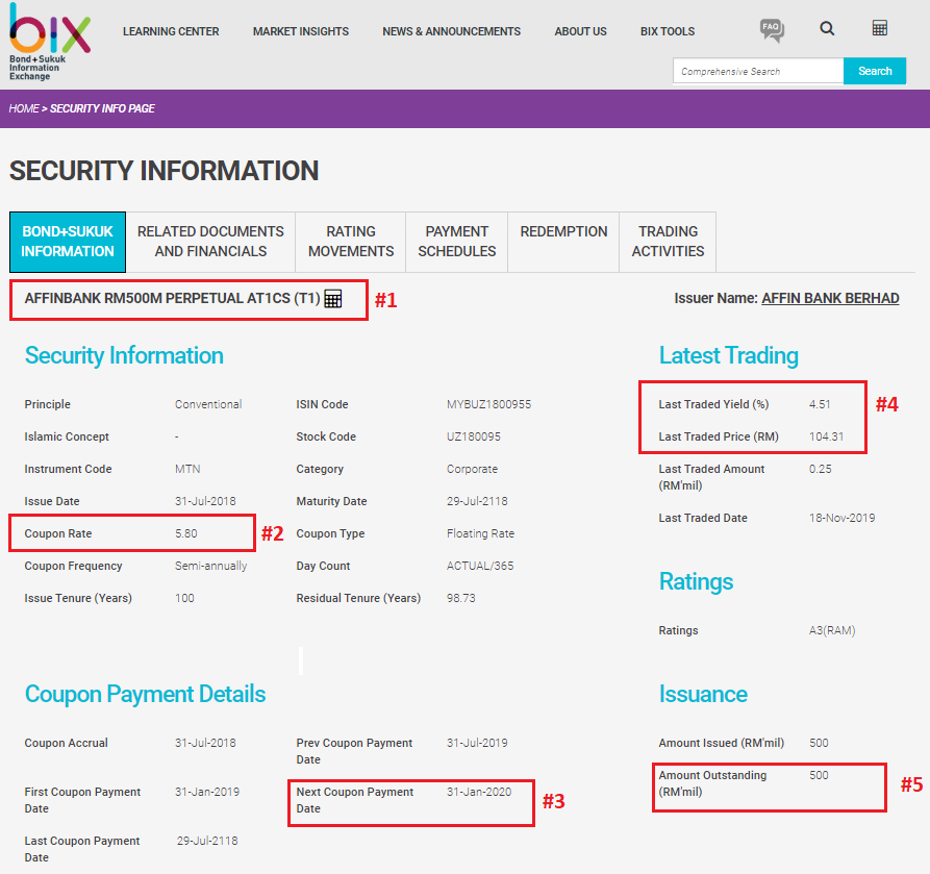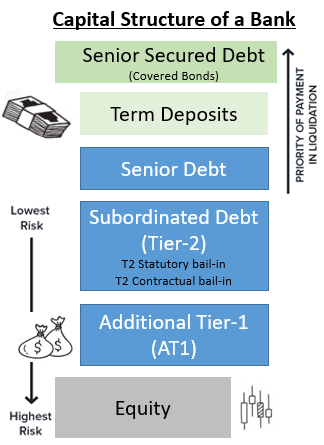
BIX ARTICLE
Investing in Banks' Capital Bonds and Sukuk
Jan 16, 2020
|
7 min read
Featured Posts
SRI Sukuk: The Journey Towards Sustainable and Responsible Investment
Jul 23, 2020
|
5 min read
Securities Commission's Capital Market Masterplan 3 (CMP3)
Sep 21, 2021
|
2 min read
What If We Allowed Retail Investors to Directly Invest in Malaysia’s Government Bond?
Aug 24, 2021
|
8 min read
Islamic Bonds Come Under Microscope After Garuda Indonesia Default
Aug 19, 2021
|
8 min read

Why Invest in Banks’ Capital Bonds and Sukuk?
Introduction
Five reasons to invest in Banks’ Capital Bonds/Sukuk
#1 – All Malaysian banks are Investment-Grade at every layer of capital
| Rating | Top-6 | Mid-Small | Foreign-backed |
| AAA | MBB, CIMB, PBB, HLBB | OCBC, UOB, HSBC, SCB | |
| AA1 | MBB, CIMB, PBB, HLBB (Tier-2) | OCBC, UOB, HSBC (Tier-2) | |
| AA2 | RHB, AMBB | OCBC AT1 | |
| AA3 | PBB AT1 RHB, AMBB (Tier-2) |
AFFIN, BIMB | CIMB THAI |
| A1 | CIMBGH AT1 HLBB, RHB, AMBB AT1 |
ALLIANCE, AFFIN, BIMB (Tier-2) | |
| A2 | ALLIANCE Tier-2 MBSB |
||
| A3 | MBSB Tier-2 AFFIN AT1 |
||
| BBB1 | ALLIANCE AT1 | ||
| BBB2 | MBSB AT1 | ||
| BBB3 |
#3 More Shariah-compliant financial instruments on offer compared to stocks
#4 There are values across the capital structure of the bank you like
The table illustrates how we can plot potential yield at different level of capital
https://www.bixmalaysia.com/Security-Info-Page.aspx?SBID=6636
.png)
Author profile
Fakrizzaki Ghazali was a Fixed Income portfolio manager and analyst in an
 investment management firm in KSA, covering GCC and Global Sukuk markets. He previously worked as a credit strategist at one of Malaysia’s sell-side research house; also used to serve a private bank in Kuala Lumpur with focus on generating bottom-up ideas from both Investment Grade and High Yield bonds in the Asian credits space. Fakrizzaki started as an analyst at a local asset management having debuted his career as an auditor in one of the Big-4 firm. The article is his own opinion from experience in the industry for over sixteen years. He believes that retail investors need more high-yield ideas and be constantly guided as there are sufficient low-risk, high-quality bonds/sukuk offered in the market.
investment management firm in KSA, covering GCC and Global Sukuk markets. He previously worked as a credit strategist at one of Malaysia’s sell-side research house; also used to serve a private bank in Kuala Lumpur with focus on generating bottom-up ideas from both Investment Grade and High Yield bonds in the Asian credits space. Fakrizzaki started as an analyst at a local asset management having debuted his career as an auditor in one of the Big-4 firm. The article is his own opinion from experience in the industry for over sixteen years. He believes that retail investors need more high-yield ideas and be constantly guided as there are sufficient low-risk, high-quality bonds/sukuk offered in the market.Disclaimer
This report has been prepared and issued by Bond and Sukuk Information Platform Sdn Bhd (“the Company”). The information provided in this report is of a general nature and has been prepared for information purposes only. It is not intended to constitute research or as advice for any investor. The information in this report is not and should not be construed or considered as an offer, recommendation or solicitation for investments. Investors are advised to make their own independent evaluation of the information contained in this report, consider their own individual investment objectives, financial situation and particular needs and should seek appropriate personalised financial advice from a qualified professional to suit individual circumstances and risk profile.
The information contained in this report is prepared from data believed to be correct and reliable at the time of issuance of this report. While every effort is made to ensure the information is up-to-date and correct, the Company does not make any guarantee, representation or warranty, express or implied, as to the adequacy, accuracy, completeness, reliability or fairness of any such information contained in this report and accordingly, neither the Company nor any of its affiliates nor its related persons shall not be liable in any manner whatsoever for any consequences (including but not limited to any direct, indirect or consequential losses, loss of profits and damages) of any reliance thereon or usage thereof.
YOU MAY ALSO LIKE
TUTORIAL
Apr 08, 2024
|
7 min read
ARTICLE
Mar 01, 2024
|
4 min read
ARTICLE
Dec 28, 2023
|
7 min read
ARTICLE
Dec 27, 2023
|
6 min read


.png)
